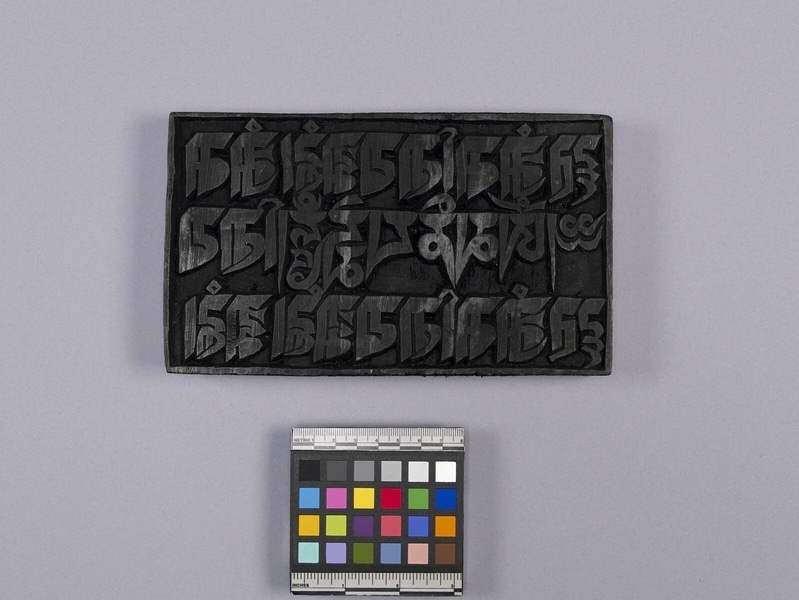Printing Block Item Number: 1431/5 from the MOA: University of British Columbia

Description
Woodblock, or print block. Rectangular-shaped brown and black wood block with three rows of characters carved in relief and raised on surface. The top and bottom lines are in the Lantsa Sanskrit script and the middle line bears the mantra in Tibetan script, which may be transliterated as **||Om mani padme hum|. Thinly carved border around entire frame.
History Of Use
For printing on paper or textiles.
Cultural Context
A printed image from this block would have three lines of text that would be read left to right, with each line conveying the six-syllable mantra for Avalokitesvara, the bodhisattva of compassion of Mahayana Buddhism. The top and bottom lines are in the Lantsa Sanskrit script that became popular in eleventh-century Tibet for transcribing Sanskrit scriptures and for adorning temples, prayer wheels, and other sacred objects. The middle line bears the mantra in Tibetan script, which may be transliterated as **||Om mani padme hum|. Each line ends with two syllables in Lantsa script that belong to a fourth iteration of the mantra. All three lines also open with a different silent symbol that marks the beginning of a text, which is known in Tibetan as the mgo-yig, or “head letter” and transliterated as **||. This mantra is repeated as a daily prayer to summon Avalokitesvara and may be loosely translated as “Om, praise to the jewel in the lotus.” However, the deeper meaning lies in each syllable and their many layers of mystical significance.
Item History
- Made in Nepal ? or Tibet ?
- Owned by Moira Irvine before October 9, 1990
- Received from Moira Irvine (Donor) on October 9, 1990
What
Who
- Culture
- Himalayas
- Previous Owner
- Moira Irvine
- Received from
- Moira Irvine (Donor)
Where
- Holding Institution
- MOA: University of British Columbia
- Made in
- Nepal ? or Tibet ?
When
- Ownership Date
- before October 9, 1990
- Acquisition Date
- on October 9, 1990
Other
- Condition
- good
- Current Location
- Case 76
- Accession Number
- 1431/0005